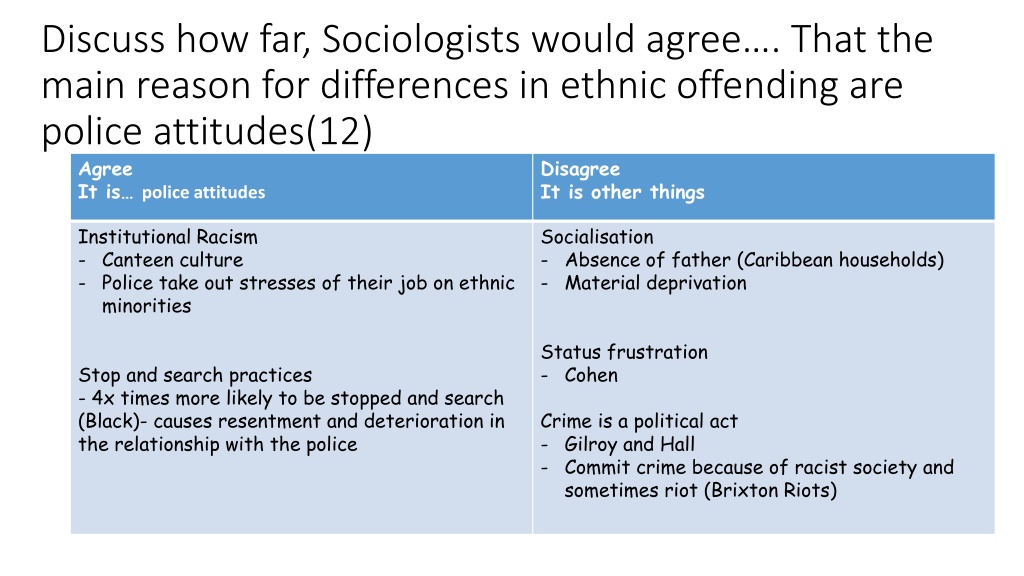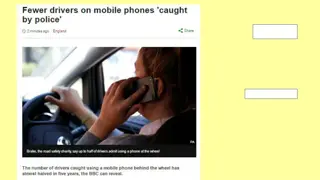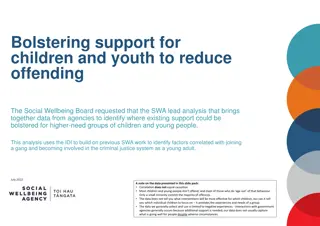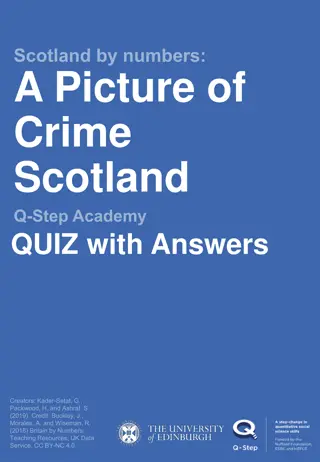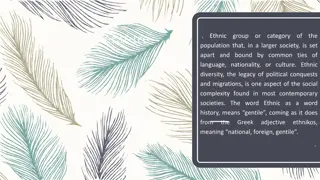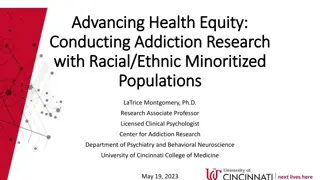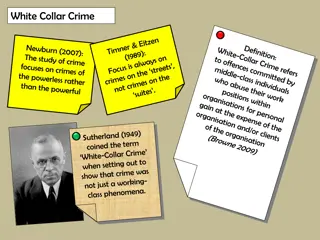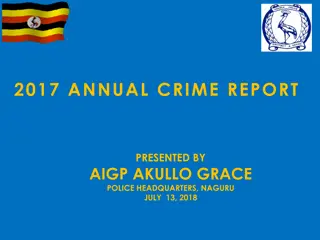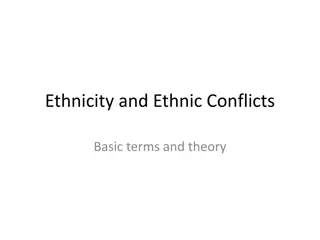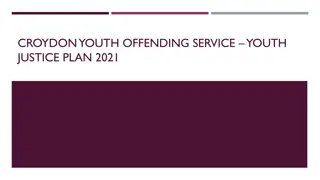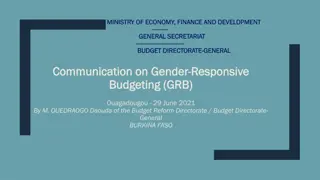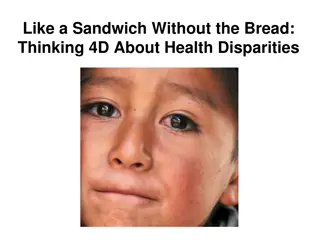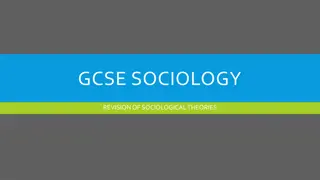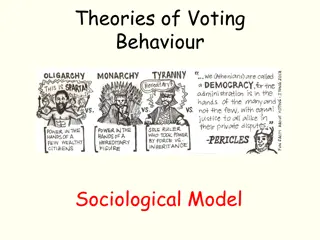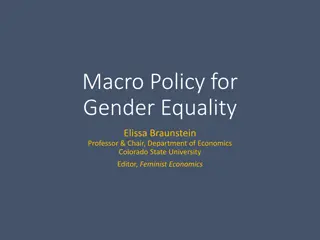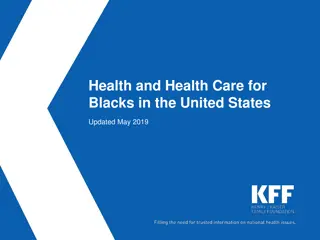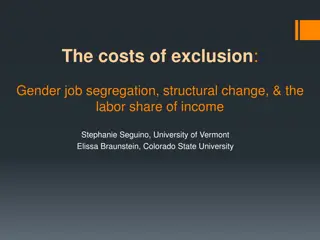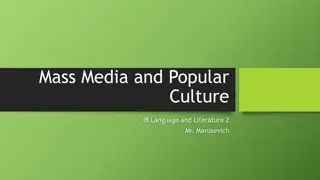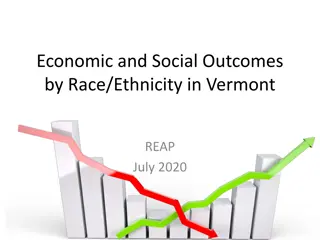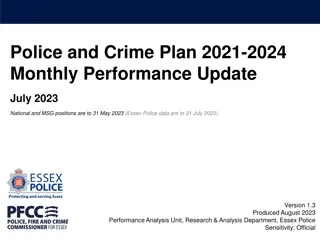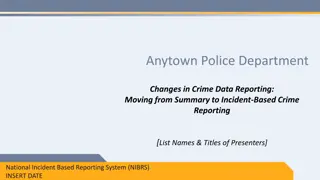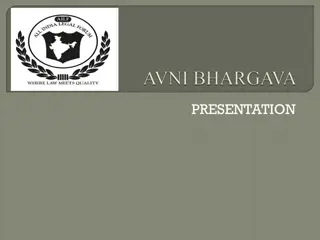Sociological Perspectives on Ethnic Offending, Gender Disparities, Social Class Influence, and Crime Causes
Sociologists analyze the reasons behind differences in ethnic offending, disparities between men and women in crime rates, impacts of social class on criminal behavior, and the role of relative deprivation in driving criminal activities. Factors such as police attitudes, socialization processes, material deprivation, and societal structures are considered crucial in understanding the dynamics of crime within various social groups.
Download Presentation

Please find below an Image/Link to download the presentation.
The content on the website is provided AS IS for your information and personal use only. It may not be sold, licensed, or shared on other websites without obtaining consent from the author. Download presentation by click this link. If you encounter any issues during the download, it is possible that the publisher has removed the file from their server.
E N D
Presentation Transcript
Discuss how far, Sociologists would agree. That the main reason for differences in ethnic offending are police attitudes(12) Agree It is police attitudes Disagree It is other things Institutional Racism - Canteen culture - Police take out stresses of their job on ethnic minorities Socialisation - Absence of father (Caribbean households) - Material deprivation Status frustration - Cohen Stop and search practices - 4x times more likely to be stopped and search (Black)- causes resentment and deterioration in the relationship with the police Crime is a political act - Gilroy and Hall - Commit crime because of racist society and sometimes riot (Brixton Riots)
Discuss how far, Sociologists would agree. That the main reason for differences in offending between men and women are down to socialisation (12) Agree It is socialisation Disagree It is other things Women are concerned about status in society - Judged twice by society Chivalry Thesis - Women are treated more leniently by male dominated courts and police- they get away with crime as they re seen as sad not bad - Leads to statistical inaccuracy - Pollock Roles given through socialisation - mother- housewife (expressive) - Custody of children etc. Women lack the opportunity to commit crime - Social control from the family - Lack the opportunity to commit White Collar Crime (glass ceiling effect) Class & Gender Deal (Carlen)
Discuss how far, Sociologists would agree. The main reason differences in offending amongst socials classes is due to material deprivation (12) Agree It is material deprivation Material deprivation can lead to reduced outcomes in education - Lack of qualifications- lack of money- low prospects in life- high chances of offending] Disagree It is other things Strain Theory - Gap between the goals and means causes crime. - Different reactions- innovation, rebellion etc. Labelling theory - Becker SFP, Master Status Deviant Career Subcultures - Cohen - Working class youths join rebellious subcultures (status frustration) Material deprivation can lead to crime- people may have relative deprivation (Young) - Leads to resentment - Riots The middle class engage in White Collar crime - Sutherland; capitalism is the cause
Discuss how far, Sociologists would agree. That the main cause of crime is relative deprivation (12) Agree Relative deprivation Other things Disagree The cause of poverty is material deprivation People lack resources which leads them to commit crime They may feel deprived compared to others. Young 2011 London Riots- theft of high value goods was motivated by resentment Underclass causes crime New Right Inadequate socialisation Welfare state breeds crime- Murray - - - - - - - Labelling Becker Leads to SFP, Master Status and deviant career - - Strain Theory Merton Strain between the goals and the means can lead to criminal responses, such as innovation, rebellion - - Capitalism causes crime - The working class commit crime by absorbing the values of capitalism such as greed; Middle class engagee in white collar crime to further profit
Discuss how far, Sociologists would agree. That statistics on poverty are not accurate (12) Agree They are not accurate Disagree They are accurate Hidden figure of poverty Statistics are not shown on government figures falling through the net (right not be reported. For example) Some groups don t take up benefits (e.g. ethnic minorities) Hidden Homeless- B&B/Couchsurfing; the government doesn t report these; Information is collected by the government on unemployment and child poverty through research. - Helps to inform policies on helping the poor through the welfare state - - - - Poverty definition doesn t exist (Towsend) Many conflicting definitions of poverty For example, income; housing; claiming benefits levels; Townsend- lifestyle surveys were the best indication. - - - The government may not record data or manipulate it (social construction) So it does not seem likely they are not doing anything about poverty. High rates of poverty can be drain funds from the government so they are likely to downplay how many people are poor - -
Discuss how far, Sociologists would agree.that working class males are most likely to commit crime because of status frustration (12) Agree Status frustration Other things/other Disagree Cohen Working class males form subcultures Because they lack education, work opportunities etc. Strain theory Merton Innovation, rebellion, retreatism Working class males may lack goals and means so engage in strain activities which lead to crime - - - - - Miller Focal concerns for working class males Toughness, smartness etc. Subculture theory- Willis; males underachieve and lack future status - - - Poverty and relative deprivation Males lack material goods compared to others in society Media makes capitalism more appealing Crime is the outcome- Young; London Riots, 2011 - - - Other class groups engage in crime White collar, corporate crime- Sutherland & Nelken -
Discuss how far sociologists agree that official crime statistics provide an accurate measure of crime (12) Agree They Do It is a large scale collection of data- likely to be the best picture possible - Certain types of OS are more likely to be accurate (e.g. Victim surveys) - Published by the government so can generally be trusted - For some groups it is a reflection of reality statistics (it accurately suggests that certain groups are more likely to engage in crime- such as BAME) Disagree They do not dark figure of crime - Underreported embarrassment, threat, lack of trust in the police, fear of reprisals, concerns about self-implication, trivial - Under recorded police may want to construct statistics to improve the image of the police, remove embarrassingly high statistics, see as trivial, be sceptical about certain social groups - Government may manipulate statistics- socially constructed Feminists & Gender Women may not feature on crime statistics- police are more likely to use their discretion Pollock- Chivalry Thesis- when women are treated more leniently because they are seen as sad not bad DV is underreported (Dobash & Dobash) - - - Ethnicity Black people are less likely to appear as victims Over reported or targeted as criminals (5x stop & search) Police Labelling; Institutional Racism - - -
Discuss how far sociologists agree that the working class are more likely to commit crime than other social classes (12) Agree They are New Right (Murray) - Underclass is likely to commit crime because of material deprivation, caused by welfare dependency - inadequate socialisation from parents- socialised into a life of crime Disagree They are not WCC is likely in society- Marxists - Middle class - Tax evasion Labelling Theory (interactionists) Becker The working class are more likely to be labelled as criminal, leading to SFP, MS, DC Police- labelling of working class - - - Police are likely to target working class areas Subcultures Status Frustration- Cohen WC boys suffer lack of opportunity (education/careers)- therefore they seek status from peers in crime - Merton- Strain Theory - Working Class are more likely to be unable to achieve goals and through correct means (anomie)- e.g. innovation- e.g.
Discuss how far sociologists agree that the media creates criminal behaviour and activity (12) Agree It does - People emulate violence that they see in the media - James Bulger murder- childsplay Media is a moral guardian Ferguson- says that video game violence is not harmful Media violence may act as a purge Disagree Other things/the media has little influence Media has less influence than it had in the past - People are selective over media Marxists- media has significant influence on crime Bandura- Bobo doll experiment Other things cause crime (concise) Strain Socialisation Labelling - - - Media amplification Creating a moral panic- Cohen (Mods and Rockers) People may create crime as a result of a moral panic. - -
Discuss how far sociologists agree that ethnic minorities face prejudice and discrimination which leads to higher rates of crime (12) Agree They do Self-Fulfilling prophecy & Master Status - Becker - Negative labelling- leads to deviant career - Selective law enforcement- Cicourel Disagree Other considerations Social construction of official statistics - BAME don t commit more crime- it s just that they are more likely to be targeted Other factors cause high rates of crime, not related to prejudice Poverty ? Other social groups who face poverty don t always engage in crime; not all ethnic minorities do. Institutional racism Black people are more likely to be stopped and searched- 5x Prison 5x McPherson Report- relationship between police and public had deteriorated and led to resentment However, the MR led to recommendation to improve this - - - - BAME face discrimination and poverty which leads to crime Gilroy Lash out at a society which has rejected them - -
